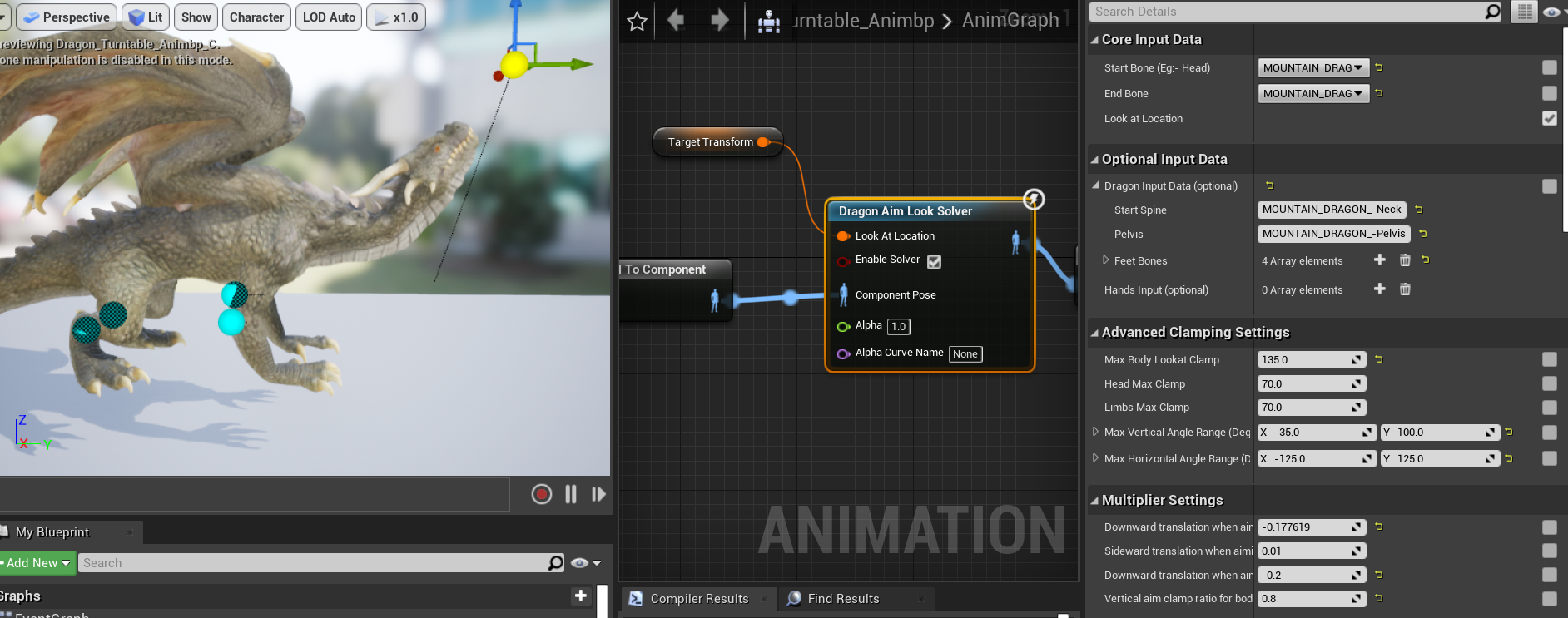Aim Solver Setup (All Type Generic)
A generic aiming IK solver that aims and rotates a sequence of bones towards a target location.
Table of contents
Simple Setup
1) Find the “Dragon Aim Look Solver” blueprint node in the animation graph.
2) Type the “Start Bone” (eg:- Head) and “End Bone” (eg:- Chest or Pelvis).
3) A transform widget appears in the animation blueprint viewport if setup is valid. Move the widget around to easily test the aiming of the character.
4) Supply a transform variable to the “LookAt Transform” transform node. This variable is the target location in world space.
Advanced Setup
1) Follow all the steps in the simple setup.
2) Type the bone names in the “dragon input data”. Ensure correct bone names are added for pelvis,spine-start and foot bones.
3) If separate hand aiming is needed, set the hand bones in the hand array. Set the shoulder,elbow and hand bones.
4) Tweak the clamp parameters under the “Advanced Clamp Settings”. Separate clamp parameters are available for body,head and limbs.
5) “Max body clamp” controls the rotation limit of the main body. It works in conjunction with the “Body Clamp Curve” curve editor inside the solver. Tweak if needed.
6) Increase or decrease the maximum clamp limits both vertically and horizontally.
7) “Limb Clamp” controls how far or how little the arms can follow the target. Tweak it as needed. Higher values are good for gun aiming, and lower values are used for wings suspension when aiming while flying (for birds).
8) If aiming using a handheld weapon such as a gun or a sword, then tweak “target aim offset” as needed.
9) Enable or disable the “use relative rotation algorithm” to switch between two type of aiming algorithm.
10) Details for each parameters are provided inside the tooltips. Experimentation is encouraged. Check out the example project in github to see awesome example setup.
Useful tips
- The aim solver can be used also for aiming tails of a character. The setup is the same, but the “lookat vector” parameter needs to be inversed. (eg:- If the lookatvector of the character is using the default (0,1,0) then the tail solver need to use (0,-1,0) as the vector input since the tail is facing backwards compared to the rest of the body)
